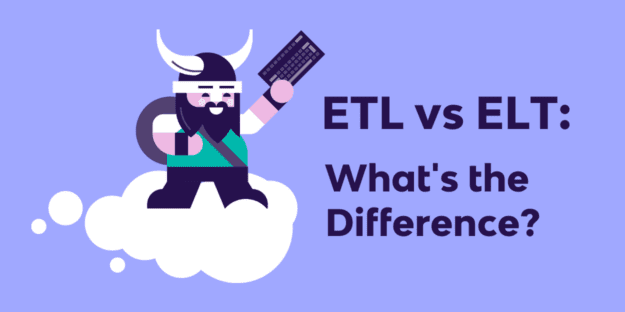Passionate Olympic Historians & Statisticians
Bill Mallon is an American orthopedic surgeon, former professional golfer and a leading authority on the history of the Olympic Games. He started collecting Olympic stats back in 1964, at the age of 12. This coalesced into real data in the early 1980s when he got his first PC. In the late 1990s, he joined two Norwegians, Arild Gjerde and Magne Teigen, to combine their work into databases for all Olympic results and all Olympic athletes.
In the late 1990s, they found other “statistorians” via e-mail and discovered that they were independently working on the same, or at least very similar, projects. Olympic geek and software connoisseur, Jeroen Heijmans, joined them in 2002, and helped them convert the databases into an online website, which became olympedia.orfg.

The data used to create this website is the product of years of work by a group of dedicated Olympic historians and statisticians. The relentless work and passion from this team about olympic data and history is remarkable. They have managed to compile the most complete and most accurate database of Olympic athletes yet known.
It might have started as a hobby, but they have been collecting this data for so long and from so many dedicated experts on the topic, that they have managed to amass about 185 person-years of work that have produced their databases and information. In fact, the International Olympic Committee (IOC) now uses olympedia.org as part of their Olympic Statistical Database.
Understanding Shifting Human History through Olympic Data
When talking about olympic data, we think about pushing sports boundaries through dedication, discipline, and determination. The Olympics remains one of the few events that can unite billions of people to celebrate internationally – with a contagious sense of pride for what individuals, teams, and nations are able to achieve when it comes to physical and mental excellence.
Winning a medal for your country, or setting up a record for your sport will inevitably bring a huge sense of pride and joy to an entire nation or sports fan. However, there is essential Olympic data beyond the times shown or stopwatches or the rankings displaying the number of medals by country.
If we analyze historical data of the Olympics, we can quickly find that these games are also a reflection of how humanity and society has changed or evolved. How has the representation of women at the games changed throughout the decades? Did you know that painting and poetry used to be Olympic events? Which countries and regions around the world are still underrepresented? How has the human body and strength evolved throughout the decades?

What Olympic Data can Teach us about Society, Culture, & the World
Randy H. Griffin, a Senior Data Scientist at BCG GAMMA, the data science arm of the Boston Consulting Group, created a fascinating piece of work. She took the publicly available data which the olympic statisticians gathered, and analyzed it with the goal of shedding light on major patterns in Olympic history.
The ‘modern Olympics’ comprises all the Games from Athens 1986 to Rio 2016. Randy used it as lens through which we can understand global history, including shifting geopolitical power dynamics, women’s empowerment, and the evolving values of society.
Here are some of the key findings within this insightful look at olympic data:
1. Athlete Participation

The number of athletes participating has been increasing since the beginning of the olympics. However, it peaked around the 2000, where it levels off. The list of events and athletes cannot grow indefinitely, and it might have reached a saturation point with around 300 events and 10,000 athletes. It is interesting to see the long periods without games in the years corresponding to WWI and WWII.
In addition, you can see dips in L.A. 1932 due to the great depression, Merlbourne 1956 due to several boycotts directed at France and Britain’s involvement in the Suez Crisis, and Moscow 1980 – where 66, including the U.S., boycotted the Games in response to the Soviet invasion of Afghanistan.
2. Ratio of Male to Female Olympians Over Time
The proportion of women participating in the Olympics has greatly increased over time. This chart shows that although there wasn’t much change from 1936 to 1956, there was dramatic improvement in female participation from 1956 to 2016. In fact, some countries in 1996 and 2016 even sent a majority of female athletes to the Games.

3. Geographic Distribution & Inclusion
These maps from Amsterdam 1928 and Rio 2016 compare the geographic distribution of athletes at each of those games. While it is clear to see that geographic representation has increased greatly over time, there are still key regions such as Africa, Southeast Asia, the Middle East, and much of South America, which remain severely underrepresented.

4. Weight and Height of Athletes over time

The most common trend is for athletes to get both taller and heavier over time. The increase in size has been most extreme for basketball, ice hockey, water polo, downhill skiing, and rowing. Swimmers appear to have increased disproportionately in height relative to weight. While most events are characterized by larger athletes over time, some events such as gymnastics, have seen athletes get shorter and lighter.
Tokyo 2020
History is being written in the current Olympic games in Tokyo. New legends are being made and existing records smashed. Take Venezuela’s Yulimar Rojas, who just shattered the long-held women’s world record in the triple jump – and produced a stunning leap of 15.67 meters with her final attempt in the final at the Olympic Stadium. Or Tatjana Schoenmaker, the 24-year old South African swimmer who won the women’s 200-meter breaststroke, breaking an 8-year-old world record with a time of 2 minutes, 18.95 seconds.
Behind each data point there is a story of talent, ambition, and perseverance. If you want to slice and dice data from the current Olympics in new ways or to better understand the achievement from new perspectives, there are many resources available.
For example, this dataset in Kaggle contains over 11,000 athletes, with 47 disciplines, along with 743 Teams taking part in the 2021 (2020) Tokyo Olympics. It contains the details of the Athletes, Coaches, and Teams participating as well as the Entries by gender, athlete name, countries represented, discipline, gender of competitors, and names of the coaches. What’s more, it is up to date with medals (gold, silver, bronze), as the games progress.
I hope these resources, insights, and data visualizations help you understand the impact and significance of the Olympic games from a new perspective.
Enjoy what’s left of Tokyo 2021!
Minimize the firefighting. Maximize ROI on pipelines.





